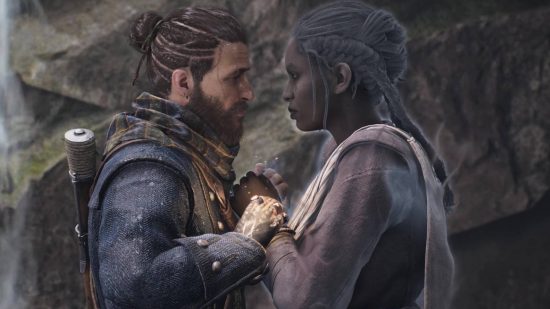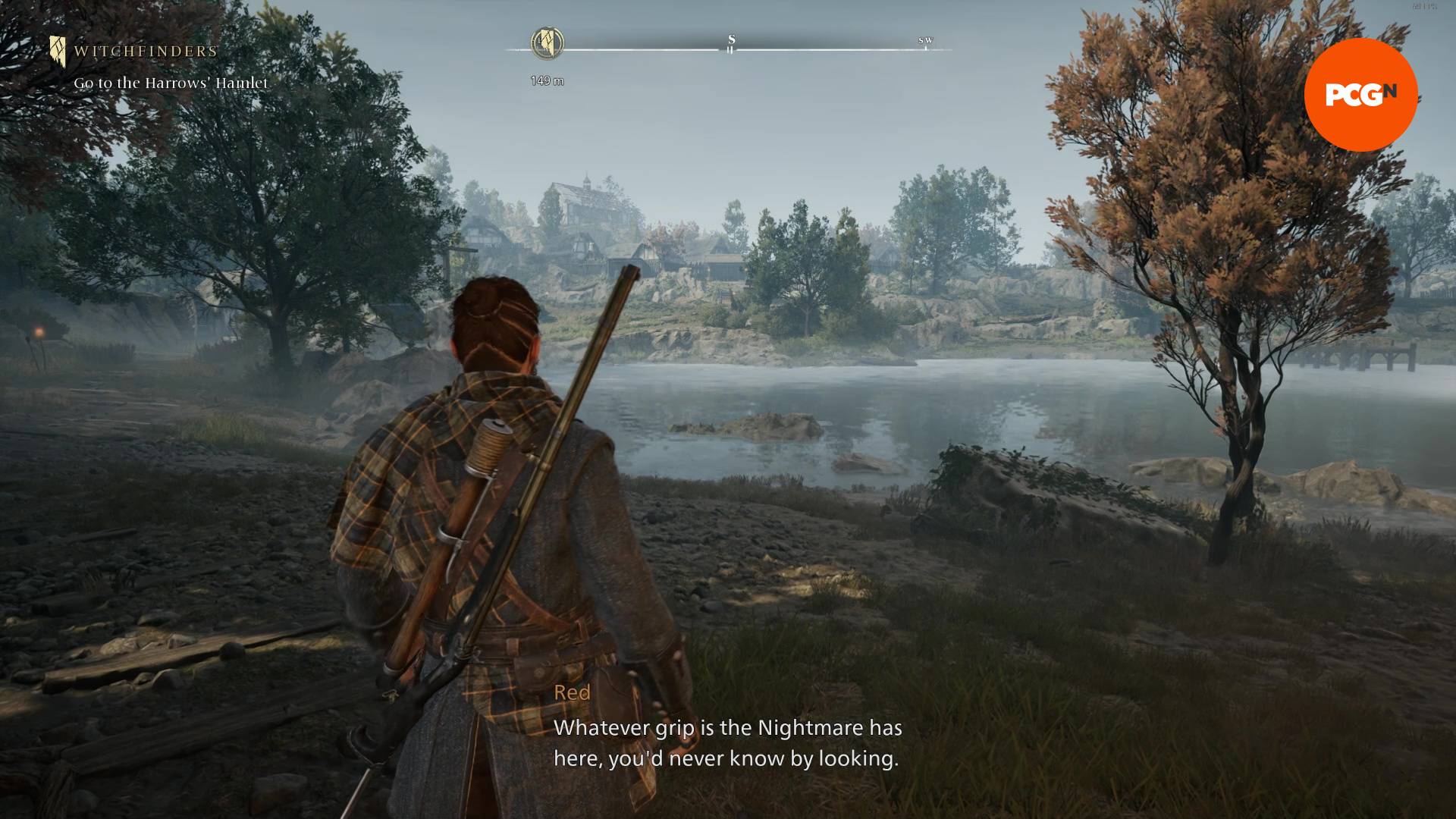Our Verdict
Banishers: Ghosts of New Eden is a hauntingly beautiful tale of two lovers embarking on a treacherous journey that tests their relationship through tragedy. With a world and combat that emulate the God of War reboot, and side quests similar to The Witcher 3, this is one of 2024's early must-plays, even if its moral decisions are restrictive.
Banishers: Ghosts of New Eden is a love story. The primary antagonist and instigator of the game’s inciting incident is a ghost known as The Nightmare, who is spreading a curse across 17th century New Eden, but the narrative’s true driving force is the relationship between the two ‘banishers’ sent to rid the land of this undead evil. Don’t Nod’s latest rarely missteps, immersing you emotionally with phenomenal worldbuilding, expertly written characters, and dialogue where each word hits harder than the last.
You control both protagonists: Ruaidhrigh “Red” mac Raith, a Scotsman who sorely misses his homeland, and Antea Duarte, a Londoner who dies within the RPG game‘s first hour. However, thanks to this being a world where “the dead linger,” as you’ll hear mentioned many times throughout the 30-hour runtime, it’s as if Antea never died at all. She accompanies Red from start to finish in an ethereal form, bringing a host of new spectral powers to the table, all of which are required to discover everything New Eden has to offer.

It’s Antea’s death and subsequent reappearance as a ghost that spurs Red on, as shortly after she shows herself again, you must pledge an oath. Do you promise to resurrect Antea using the “highly dangerous” ritual of Lesser Palingenesis, or do you work towards allowing Antea to ascend into whatever lies beyond? This early-game decision – with the choice to either reaffirm your oath or change paths halfway through – is my only major gripe with this otherwise enthralling journey.
Throughout New Eden, you’ll encounter many types of people. Lots of them are haunted by ghosts of those they knew and oftentimes did wrong by, or vice versa. Away from the main objective of reaching and defeating The Nightmare to lift the curse, Red and Antea can solve these haunting cases, which are reminiscent of side quests and contracts in The Witcher 3: Wild Hunt. Talk to the people involved, both living and dead, investigate their belongings, and oftentimes venture into the wilderness to hunt for objects of supernatural power tying each ghost to the land of the living.
These cases always end with a decision. Do you blame the living person for what has happened, do you banish the ghost, or will you let the ghost ascend peacefully? However, to commit to Antea’s resurrection, she must essentially feed on the essence of the living, which equates to sacrificing a human at every given opportunity. So while these hauntings will often have you questioning what is morally right – with you assuming the role of judge, jury, and executioner – your decisions are ultimately tied to your earlier oath. For you to bring Antea back to life, for example, you must “sacrifice as many settlers as possible,” which means completing every haunting case.
Outside of the moral quandaries, the core gameplay loop here will be familiar to those who have played the God of War reboot and its sequel, Ragnarok. Banishers: Ghosts of New Eden follows an almost identical level structure where it is technically an open-world game interconnected by narrow paths, but you’ll never come across a vast space where you can gallivant off in whichever direction you like. You can easily backtrack to explore previously inaccessible side paths, but this is very much a hand-crafted, largely linear experience – and it’s all the better for it.
While you’ll encounter a plethora of peaceful ghosts during Red and Antea’s trials and tribulations, the vast majority will come in the form of specters during combat. There are a few different types, with green specters keeping their distance and firing projectiles, while red specters are especially aggressive. They can also possess nearby corpses, which grants them weapons and essentially a second health bar.
Combat is fluid, and thanks to the quick-switching between Red and Antea, you can maximize their strengths and abilities. Red has a sword capable of light and heavy attacks, along with a rifle for ranged combat. Meanwhile, Antea’s primary attack is a simple punch, but she eventually gains access to a range of abilities, including an area-of-effect “outburst” and a leap that closes the gap on enemies. Red’s attacks are stronger against specters, while Antea is better at fighting possessed corpses, so you must switch between the two depending on your foe.
Elites are the most common type of bosses you’ll face. These named foes are bigger, tougher versions of your standard specters. Then there are scourges, which similarly are just towering, weaponized specters, putting a bit of extra pressure on the main bosses to deliver.
Thankfully, these act-ending powerhouses provide some of the game’s most memorable moments, with each offering unique mechanics and their own unsettling atmosphere. I just wish they came about a bit more frequently to break up the standard encounters.
I cannot get enough of Banishers and the world of New Eden: from the emotionally fuelled writing and the smooth combat to the notes littered around every corner, detailing more of what life was like for those who made the journey to settle in New Eden, albeit with added ghosts.
Despite the pseudo-moral dilemmas essentially being pre-determined if you want to resurrect Antea, and the low number of major bosses, Banishers: Ghosts of New Eden is still worthy of a big recommendation. You get to explore all facets of a relationship struck by tragedy and the supernatural, from being madly smitten with one another to bickering when something doesn’t go quite right. It’s a deeply heartfelt game and one of 2024’s early must-plays.




